No matched result.
Please try another word.401(k) Plan
A 401(k) plan is a tax-advantaged retirement savings account offered by many U.S. employers to help employees save for retirement. Participants contribute a portion of their salary on a pre-tax or post-tax (Roth) basis, and employers often match contributions up to a certain percentage. Funds are typically invested in a mix of mutual funds, ETFs, or target-date funds.
401(k) contributions grow tax-deferred, meaning you don’t pay taxes on investment gains until you withdraw the funds—usually after age 59½. Early withdrawals may be subject to income tax and a 10% penalty.
Key Features of a 401(k) Plan
Pre-tax and Roth Options: Traditional 401(k) contributions reduce your taxable income now, while Roth 401(k) contributions are made with after-tax dollars but grow tax-free.
Employer Match: Many companies match a portion of your contributions, offering a significant boost to your retirement savings.
Contribution Limits: The IRS sets annual limits. For 2024, the limit is $23,000 (plus a $7,500 catch-up for those 50+).
Investment Options: You can invest in a range of mutual funds, ETFs, and occasionally bonds or target-date funds.
Required Minimum Distributions (RMDs): Starting at age 73, you must begin withdrawing a minimum amount annually from your account.
Why a 401(k) Plan Matters for Investors
Tax Benefits: A 401(k) allows your investments to grow without being taxed yearly. Roth accounts provide tax-free withdrawals in retirement.
Compounding Growth: Tax-deferred growth and regular contributions can compound over decades, leading to significant long-term savings.
Financial Independence: Having a 401(k) supports long-term wealth building and helps ensure you aren’t reliant solely on Social Security.
Employer Incentive: Free money through matching contributions is a benefit no investor should ignore.
Top 10 Most Common Questions About 401(k) Plans
-
What is a 401(k) plan?
It’s a retirement account sponsored by your employer where you contribute part of your paycheck before (or after) taxes.
-
How much can I contribute to a 401(k)?
-
What’s the difference between a Traditional and Roth 401(k)?
Traditional 401(k) contributions are pre-tax; Roth 401(k) contributions are after-tax and allow for tax-free withdrawals.
-
When can I withdraw money from my 401(k)?
Generally after age 59½. Earlier withdrawals are subject to tax and a 10% penalty.
-
What happens if I withdraw early?
You’ll pay income tax and may incur a 10% early withdrawal penalty unless an exception applies.
-
What is an employer match?
An employer contributes to your 401(k) based on your own contributions, often up to a specific percentage.
-
Can I lose money in a 401(k)?
Yes, your investments can fluctuate in value depending on market performance.
-
Are there fees associated with 401(k) plans?
Yes, investment and administrative fees may apply, so it’s important to review plan details.
-
Do I have to take money out of my 401(k)?
Yes. Once you reach age 73, you must take Required Minimum Distributions (RMDs).
-
Can I roll over my 401(k) if I leave my job?
Yes. You can roll it into IRA or another 401(k) without taxes if done correctly.
Example
You work for a company that offers a 401(k) with a 100% employer match up to 5% of your salary. You earn $60,000 annually and contribute 10% ($6,000) to your 401(k). Your employer contributes another $3,000 (5% match), giving you a total of $9,000 invested for the year.
Your contributions are invested in a mix of mutual funds and ETFs, and you don’t pay any taxes on the gains until you start withdrawing after retirement.
Risk Disclosure
Trading or investing whether on margin or otherwise carries a high level of risk, and may not be suitable for all persons. Leverage can work against you as well as for you. Before deciding to trade or invest you should carefully consider your investment objectives, level of experience, and ability to tolerate risk. The possibility exists that you could sustain a loss of some or all of your initial investment or even more than your initial investment and therefore you should not invest money that you cannot afford to lose. You should be aware of all the risks associated with trading and investing, and seek advice from an independent financial advisor if you have any doubts. Past performance is not necessarily indicative of future results.

